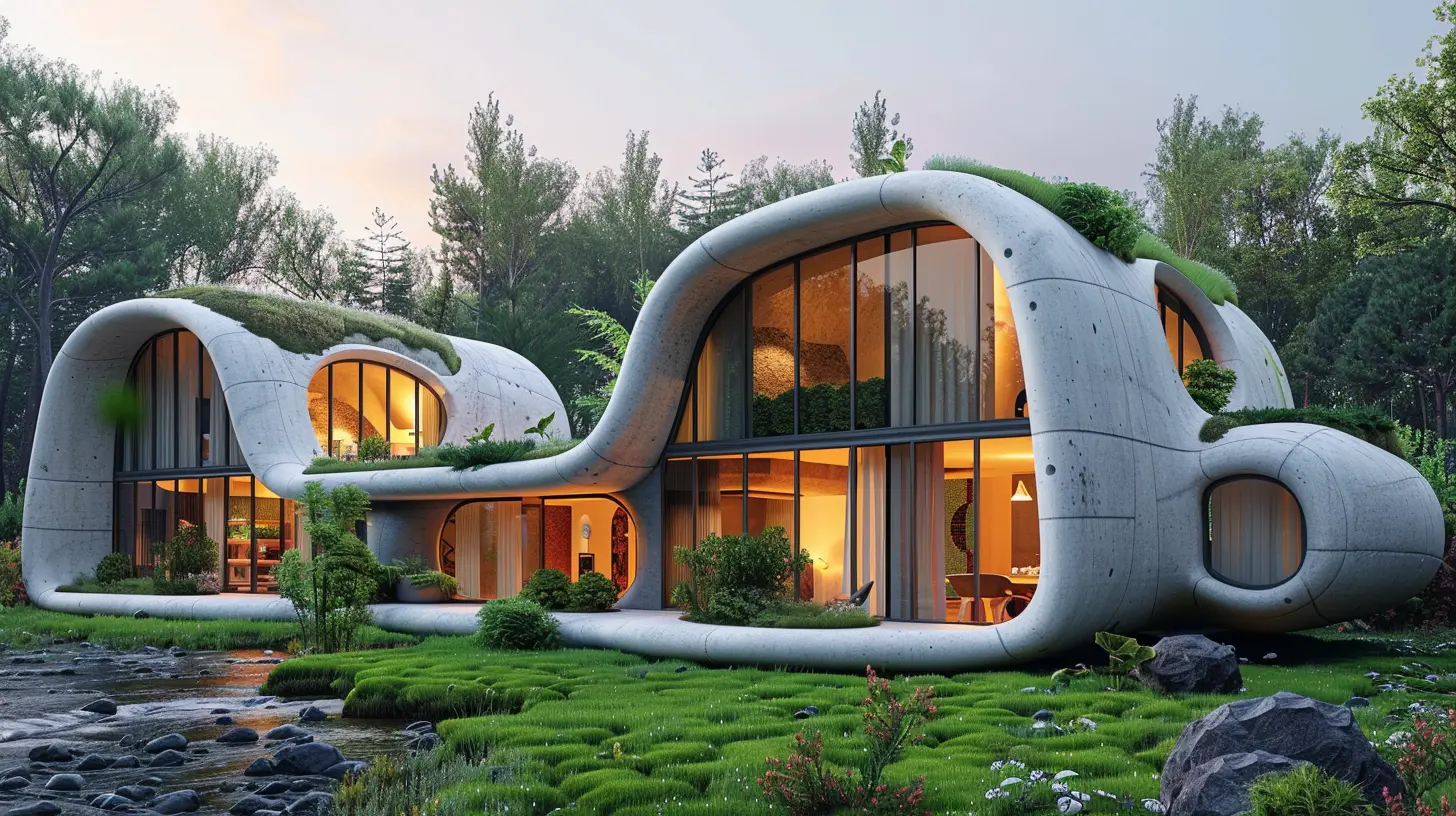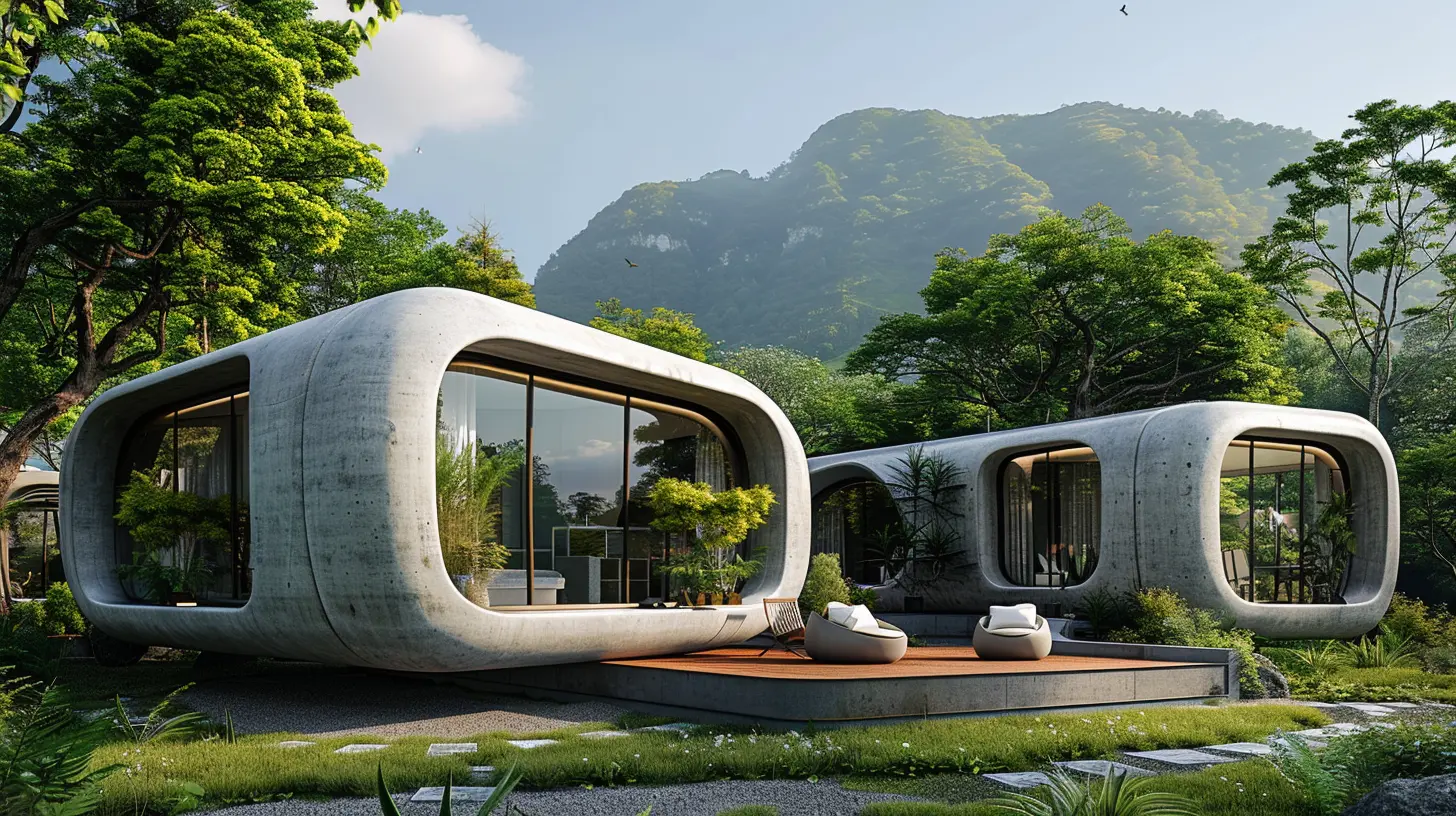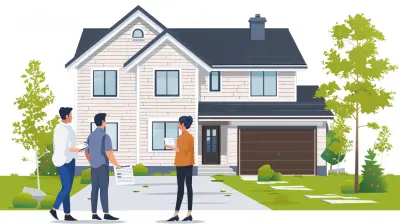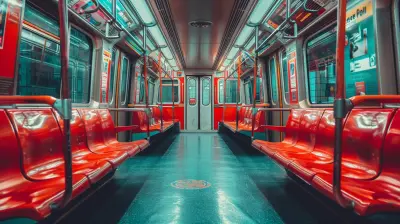The Future of Sustainable Housing with 3D-Printed Homes
30 August 2025
Imagine waking up in a cozy, eco-friendly home that was built in just a few days—layer by layer—with a massive 3D printer. Sounds like something straight out of a sci-fi movie, right? Well, welcome to the future. 3D-printed homes are here, and they might just be the game-changer we've been waiting for in the world of sustainable living.
Let’s dive into why these futuristic homes are turning heads, saving money, and potentially saving the planet too.
What Exactly Are 3D-Printed Homes?
Alright, before we get carried away, let’s clear the air. When we talk about 3D-printed homes, we’re not talking about tiny plastic models you make for your kid’s school project. No, no. These are full-sized, livable homes created using industrial-sized 3D printers.Instead of laying bricks or hammering nails, a giant robotic arm lays down material—usually a special kind of concrete—in layers according to a digital blueprint. Think of it like icing a giant gingerbread house, but way cooler and more high-tech.
Why Sustainability Is More Than Just a Buzzword
Sustainability isn’t just some trendy word thrown around by eco-influencers on Instagram. It’s a real challenge we all need to tackle—especially in the housing sector. Traditional construction methods eat up tons of energy, produce mountains of waste, and suck the planet dry of natural resources.But here's the silver lining: sustainable housing is on the rise, and 3D-printed homes are leading the charge. They’re designed to reduce waste, lower carbon footprints, and utilize materials that can be recycled or sourced responsibly.
It’s not just about saving money anymore—it’s about saving our planet. And what’s cooler than living in a home that helps the Earth breathe a little easier?
How 3D Printing Slashes Construction Waste
Let’s be honest—traditional construction is messy. Like, really messy. We're talking dumpsters full of off-cuts, broken materials, and packaging. Now, imagine if we could just print exactly what we needed—no leftovers, no waste.That’s exactly what 3D-printed homes do. The printers work with pinpoint accuracy, meaning every single line of concrete is intentional. Nothing extra, nothing wasted. Some estimates suggest that construction waste can be cut by up to 60% using 3D printing technology. That’s a big win for both your wallet and the environment.
Speed: Building Homes at Lightning Pace
Time is money, right? Well, traditional homes can take months—or even years—to build. Between bad weather, scheduling delays, and supply chain hiccups, things can drag on forever.Enter 3D printing: homes can be printed in as little as 24 to 48 hours. Yep, you read that right. A house in two days! Some more complex designs might take a little longer, but we’re still talking days or weeks, not months.
Can you imagine placing an order for your dream home, going on a weekend trip, and coming back to find it 80% done? It’s honestly kind of mind-blowing.
Eco-Friendly Materials: Building the Future, Sustainably
Here's where things get really exciting. Many 3D-printed homes use specially formulated concrete that's not only durable but also environmentally friendly. But that’s just the beginning.Some pioneering companies are experimenting with alternative materials like:
- Recycled plastic
- Hempcrete (yep, made from hemp!)
- Biodegradable composites
- Clay and soil from the building site itself
It’s like Mother Nature and technology are finally shaking hands. And it’s beautiful.
Energy Efficiency: Designed for a Greener Tomorrow
The sustainability magic doesn’t stop once the home is printed. Many 3D-printed homes are also designed with energy efficiency in mind. Think:- Solar panels on the roof
- Smart thermostats that learn your habits
- Insulated walls that keep temperatures steady
- Windows that optimize natural light and heat
Why pay high utility bills when your home can work smarter, not harder?
Customization Without the Price Tag
Do you want a round room with a spiral staircase and a jungle-themed bathroom? No judgment here. With 3D printing, creative freedom is limitless.Thanks to 3D modeling software, homeowners can design custom floor plans with unique shapes and features that would normally cost a fortune using traditional methods. Curves? No problem. Odd angles? You got it. Geometric flair? Absolutely!
This freedom means your house can truly reflect your personality—without breaking the bank.
Affordable Housing: A Real Solution to a Global Crisis
Let’s talk dollars and cents for a second. Housing affordability is a global issue. According to the UN, more than 1.6 billion people lack adequate housing.3D-printed homes offer a cost-effective solution. They’re faster, cheaper, and require less labor. This means lower costs across the board—from construction to ownership.
Countries like Mexico and India are already using 3D printing to create affordable housing communities. It’s not just a neat idea—it’s happening right now, helping families who never dreamed of owning a home finally get the keys.
Climate-Resilient Designs: Built to Withstand the Storm
With all the scary stuff we’re seeing about climate change—rising sea levels, intense storms, wildfires—it’s more important than ever to build homes that can take a beating.Luckily, 3D-printed homes are tough cookies. Thanks to their seamless construction, they’re more resistant to water damage, wind, and even fire.
Some developers are even creating hurricane-resistant models that can stand up to winds of up to 200 mph. So, whether you live in tornado alley or wildfire zones, your 3D printed home might just be your superhero in disguise.
The Tech Side: Innovation at Every Turn
Behind every 3D-printed house is a team of brilliant engineers, coders, and architects. These homes are born from digital designs, which means less room for human error. It’s the perfect marriage of art and science.Don’t be surprised if you start seeing drones scanning terrains, robots laying down insulation, or AI software optimizing floor plans for energy efficiency. Welcome to the smart home revolution—literally built in 3D.
Communities of the Future: Not Just Individual Homes
Some cities and developers are taking things a step further by printing entire neighborhoods. Imagine a block of eco-friendly, futuristic homes that look like they belong in a sci-fi movie—but they’re here, and they’re super livable.The idea is to create entire communities that are affordable, green, and beautiful. Think parks, schools, and even stores—all designed with sustainability in mind.
It’s more than a trend. It’s a movement. And we’re just scratching the surface.
The Challenges Ahead (Yep, There Are a Few)
Okay, it's not all sunshine and rainbows. Like any new tech, 3D-printed housing has its hurdles:- Regulatory red tape (permits and codes can be a nightmare)
- Limited access to large-scale 3D printers
- Material limitations (not everything can be printed—yet)
- Public perception (some folks still think it’s “too new” or “too weird”)
But innovation has always faced resistance. Remember when people thought electric cars were a joke? Now they’re everywhere.
The Bottom Line: A Greener, Cheaper, Cooler Way to Live
So, what does the future of sustainable housing look like? In a word: printed.3D-printed homes are fast, affordable, customizable, and way kinder to the Earth. Whether you’re dreaming of a tiny home in the woods or an eco-mansion in the suburbs, 3D printing is turning those dreams into reality—layer by happy, sustainable layer.
And honestly, how cool is that?
Ready to print your future?
all images in this post were generated using AI tools
Category:
Sustainable HousingAuthor:

Cynthia Wilkins
Discussion
rate this article
1 comments
Jacqueline McLemore
In the shadows of innovation, 3D-printed homes whisper promises of sustainability. Will they shape our cities or mask deeper truths? As the future unfolds, what secrets lie within the walls we create?
September 6, 2025 at 3:27 AM

Cynthia Wilkins
Thank you for your thought-provoking comment! 3D-printed homes indeed hold great potential for sustainable living, but it's essential to explore both their benefits and the challenges they may pose as we reshape our urban landscapes.


